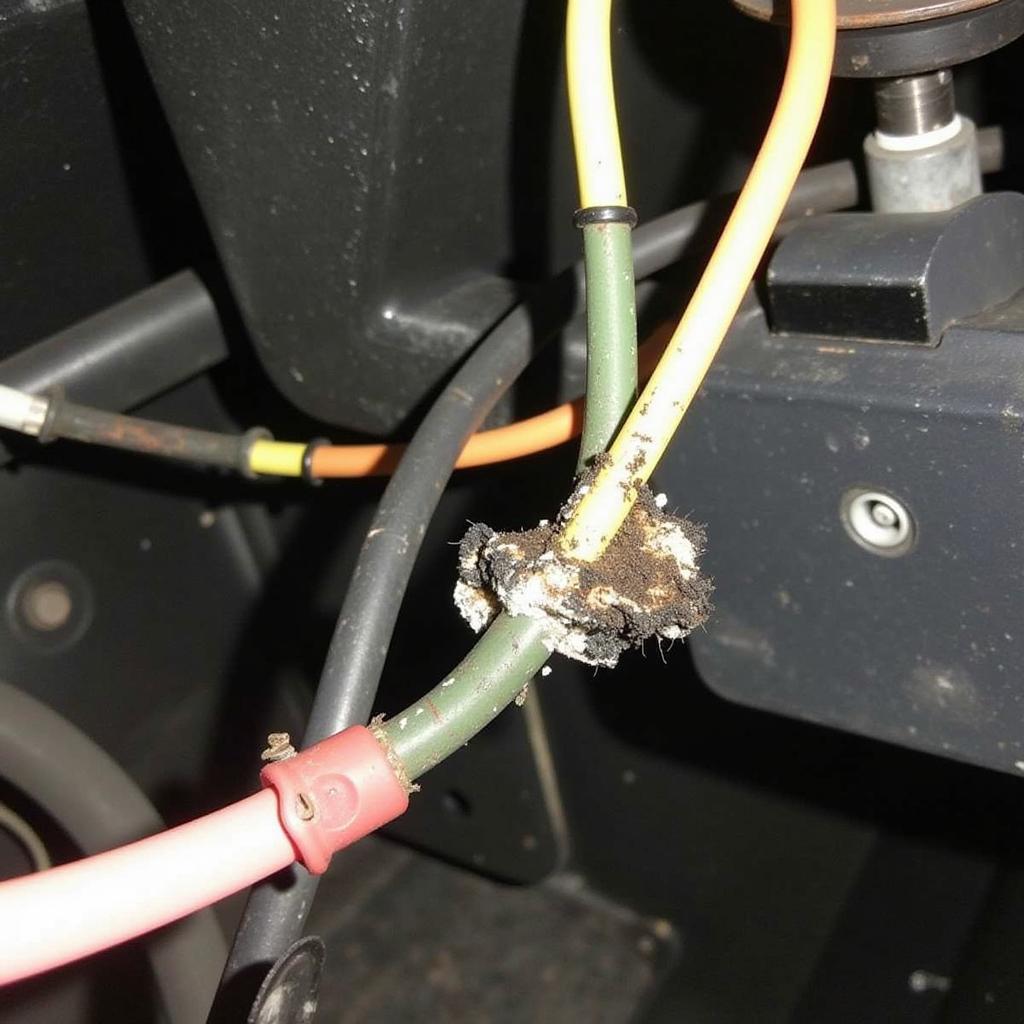The OBD2 code C1513, indicating a problem with the steering angle sensor, can be a cause for concern for any car owner. This essential sensor plays a vital role in your vehicle’s stability control system, traction control, and even your headlights. But what exactly does this code mean, and how do you address it? This comprehensive guide delves into the intricacies of the C1513 code, providing you with the knowledge to navigate this common automotive issue.
What Does OBD2 Code C1513 Mean?
The C1513 code specifically points to an issue with the steering angle sensor’s signal. This sensor, often located within the steering column or integrated into the steering rack, constantly measures the angle of your steering wheel relative to the vehicle’s straight-ahead position. This information is then relayed to the Electronic Control Unit (ECU), the car’s brain, to manage various safety and performance systems. When the ECU detects an implausible or erratic signal from the steering angle sensor, it triggers the C1513 code.
Common Causes of OBD2 Code C1513
Several factors can disrupt the steering angle sensor’s signal, leading to the C1513 code:
- Faulty Steering Angle Sensor: Like any electronic component, the sensor itself can wear out or become damaged over time, resulting in inaccurate readings.
- Wiring Problems: Damaged, corroded, or loose wiring connections between the sensor and the ECU can disrupt the signal flow.
- Battery or Charging System Issues: A weak battery or malfunctioning charging system can affect the sensor’s voltage supply, leading to erratic behavior.
- Aftermarket Steering Wheel Installation: Incorrectly installed aftermarket steering wheels can damage the sensor or disrupt its calibration.
- Steering Column or Rack Problems: Mechanical issues within the steering column or rack, where the sensor is mounted, can impact its accuracy.
Symptoms of a C1513 Code
While the check engine light illuminating is a common indicator, you may experience other symptoms when the C1513 code is present:
- Stability Control Malfunction: The vehicle’s Electronic Stability Control (ESC) system may become disabled or behave erratically, reducing stability during cornering or on slippery surfaces.
- Traction Control Issues: Similar to ESC, the traction control system may malfunction, leading to wheel spin during acceleration.
- Headlight Aiming Problems: Some vehicles use the steering angle sensor input to adjust headlight aim dynamically. A faulty sensor can disrupt this functionality.
- Erratic Steering Feel: In certain cases, you might notice unusual stiffness or looseness in the steering wheel, although this is not as common.
Diagnosing and Fixing the C1513 Code
Addressing the C1513 code requires a systematic approach:
- Read the Code: Use an OBD2 scanner to confirm the presence of the C1513 code and check for any other related codes.
- Inspect the Wiring: Visually examine the wiring harness connected to the steering angle sensor for any signs of damage, looseness, or corrosion. Repair or replace as needed.
- Check Battery and Charging System: Test the battery voltage and charging system performance to ensure they are within specifications.
- Inspect Steering Angle Sensor: If the wiring and power supply check out, the sensor itself may be faulty. A mechanic can test its resistance and signal output using a multimeter.
- Calibration: In some cases, the steering angle sensor may require recalibration using a specialized scan tool.
Steering Angle Sensor Replacement
If the diagnosis points to a faulty sensor, replacement is typically necessary. While it’s a job that can be tackled by those with mechanical experience, seeking professional assistance is recommended for accurate installation and calibration.
Expert Insight: “Remember, a properly calibrated steering angle sensor is crucial for the effective operation of several safety systems in your vehicle,” says automotive expert John Smith, ASE Certified Master Technician. “Don’t ignore this code, as it can compromise your safety on the road.”
Conclusion
Ignoring the OBD2 code C1513 can lead to significant safety and performance issues in your vehicle. By understanding its meaning, potential causes, and the necessary diagnostic steps, you can address the problem promptly and ensure the optimal functioning of your car’s vital safety systems. If you’re ever in doubt, don’t hesitate to consult a qualified mechanic for expert assistance.

